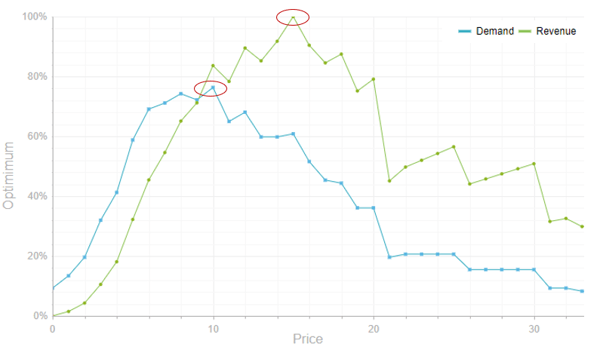7 Ways to Getting Pricing Right When Launching in New Markets
 PriceBeam
·
3 minute read
PriceBeam
·
3 minute read

Pricing Managers, Marketing Managers, and Sales teams often find it more difficult to get pricing right when launching a product in a new market, as opposed to pricing the same product in an existing market. In theory existing-market pricing should go through the same steps as new-market pricing and look at value drivers and willingness-to-pay, but in many situations existing markets mean there is a reference point to base the price on. Such a reference point is lacking if pricing for a new market.
Here are 7 ways for getting the price right when launching in new markets.
1. Understand Willingness-to-pay
If you need to price a product (or service) in a new market, it makes all the difference in the world if you understand customers' willingness-to-pay.

Demand / WtP curves like the ones above, show the optimal price point where the curve peaks. In this example, the best price to optimize quantity is 10, whereas the optimal price for optimizing revenue is 15.
In the old days when research was expensive, this could be difficult to get through a corporate approval if launching in many markets at once. These days, with cost-effective research options from e.g. PriceBeam, the cost of getting these crucial insights should no longer be an issue.
2. Understand value-drivers
While overall willingness-to-pay is a useful start, for really professional new market pricing, the next step should be to break down the willingness-to-pay into the individual value drivers. For what features or benefits are customers willing to-pay, and how much.
A good method for understanding the individual value-drivers is to use choice-based conjoint analysis. In this type of research (see e.g. PriceBeam's solution), respondents are shown a set of product choices. He/she then chooses his preference and is shown a new set of choices with other configurations; and again; and again. Through the choices it is possible to determine how much value the respondent puts on the individual features. The outcome: a series of value-drivers and the value potential customers put on them in the new market.
3. Segment the customers
While market research can be done on the overall market and make a strong support for the launch, it is preferable to do the two types of research above by individual customer segment. This provides insights into what customer segments are value buyers and what customer segments are price buyers. Or what other customer segments emphasize when choosing among product features and benefits.
4. Communicate local values
The features and product benefits that make a customer in USA buy/put a value on a product, may not be the same features or benefits that a customer in Germany, Brazil or China value. Therefore, it is important to not cut corners when conducting marketing research. In most industries, conjoint analysis results are not transferable from market to market. It is of course better than nothing, but leads to false focus on product features that don't matter to the customers.
An optimized market launch includes respect and consideration for local values and local willingness-to-pay.
5. Don't fall in the trap of a single global price
Actually, in most industries there is a marked difference in prices between countries. This for a good reason: customers are willing to pay a higher price in some markets than others. So while it can in certain instances be tempting to introduce a single, global price to simplify IT systems or manage customers who exploit price differences, the upside and benefit from differentiated pricing around the world is significant. So don't fall in the trap of harmonizing prices.
6. Consider product or service differentiation
Very much along points #4 and #5, customers in different countries value different things. Some prefer product feature A. Others value feature B higher. And some really need feature C but don't care about A. This is where product or service differentiation can play a role, especially if you have customers who are likely to compare the product and its price across countries. Adding a service, or altering a product feature, gives you better arguments for why the price is different.
7. Prepare for the future: what about a price increase next year?
Quite often overlooked when pricing a market launch is what happens next year. Or the year after? Make a plan for how prices should evolve over time in the new market. Do you start high and then gradually lower the price as the product matures or becomes obsolete? or do you start low and then introduce price increases?

The answer should really lie in what the expected willingness-to-pay is over time. In most businesses and industries, it is likely to be a more solid strategy to start high and then over time reduce the price is necessary. This is often associated with human psychology, where it is easier to accept a price reduction than a price increase. Especially start-ups get this wrong, where they value themselves too low to begin with, and then struggle to increase prices later. But also big corporations get it wrong from time to time.
Don't let it happen to you.
For many of these points you can use PriceBeam's research services to understand willingness-to-pay and value drivers. We provide high quality research services in 109 countries around the world.
.png?width=400&height=100&name=PBLogoTransparent%20(1).png)


.png)
